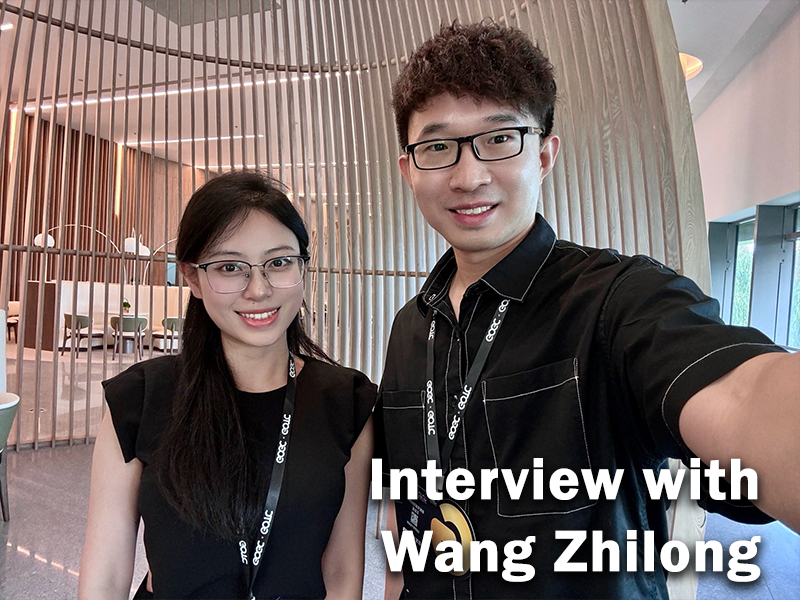- Wang Zhilong, an expert architect at JD.com, discusses the evolution of cloud-native technology, highlighting the transition to microservices and the pivotal role of Kubernetes in modern infrastructure.
- As a maintainer of the Layotto project, Wang shares his passion for open-source contributions and envisions future advancements in cloud-native technology, driven by AI and serverless innovations.
Wang Zhilong, a prominent expert architect at JD.com, who has over a decade of experience in internet development and architecture, with a special focus on cloud-native technologies. In this interview, we’ll explore his experiences, insights, and perspectives on the evolution of cloud-native technology. He shared that his current role at JD.com involves working on internet-related research and development, with a focus on cloud-native performance optimisation. With previous experience at Tencent and Alibaba, Wang Zhilong has a rich background in cloud-native technologies. His current work at JD.com involves microservices governance and serverless cloud platforms based on Service Mesh.
Key developments in cloud-native technology
“Cloud-native technology is becoming integral to modern infrastructure, especially with the advancements in AI. It’s poised to handle increasingly complex requirements and provide essential support for emerging technologies.”
Wang Zhilong, expert architect at JD.com
When discussing the significant changes in cloud-native technology, Wang Zhilong pointed out the shift from traditional monolithic applications to cloud-native microservices. He observed, “As businesses transition to the cloud, we see a move from monolithic applications to microservices. This transition introduces new challenges in deployment, observability, and service governance.” He noted that cloud-native technology is advancing into a more complex phase, with Kubernetes emerging as a foundational component of modern infrastructure.
Wang Zhilong also highlighted the growing role of cloud-native technologies in supporting AI and large-scale models, stating, “Cloud-native technology is becoming integral to modern infrastructure, especially with the advancements in AI. It’s poised to handle increasingly complex requirements and provide essential support for emerging technologies.”
Kubernetes and its key features
“Kubernetes’ declarative API allows users to define the desired state of the system. This approach simplifies error handling and enhances robustness, especially in complex, distributed environments.”
Wang Zhilong, expert architect at JD.com
As an early Google Cloud engineer, Wang Zhilong shared his insights into Kubernetes and its widespread adoption. He explained, “Kubernetes, which originated from Google’s Borg system, is crucial for managing and orchestrating diverse resources across different machines. Its ability to allocate resources based on the specific needs of applications, such as CPU, GPU, and memory, is a key feature.”
He further elaborated on Kubernetes’ declarative API, which represents a significant shift from traditional imperative approaches. Wang Zhilong stated, “Kubernetes’ declarative API allows users to define the desired state of the system. This approach simplifies error handling and enhances robustness, especially in complex, distributed environments.”
Contributions to open-source: The Layotto project
“By leveraging technologies like WASM, Layotto has improved service mesh operations, enabling more flexible and efficient cloud-native environments.”
Wang Zhilong, expert architect at JD.com
Wang Zhilong also discussed his role as a maintainer of the Layotto project. His involvement stemmed from his extensive experience with service mesh technologies in previous roles at Tencent, Alibaba, and JD.com. He remarked, “My work with Layotto was a natural extension of my experience with service mesh technologies. Layotto has provided significant benefits, especially in multi-protocol expansion and service invocation.”
He highlighted how Layotto has enhanced cloud-native capabilities, noting, “By leveraging technologies like WASM, Layotto has improved service mesh operations, enabling more flexible and efficient cloud-native environments.”
The importance of passion in open-source contributions
“The open-source community fosters an environment of equal collaboration where ideas are freely shared. This sense of community and shared purpose has been a major source of inspiration for me.”
Wang Zhilong, expert architect at JD.com
Reflecting on his motivation for contributing to open-source projects, Wang Zhilong shared his lifelong passion for technology. He said, “From a young age, I was fascinated by computers, which led me to pursue programming as a career. My enthusiasm for solving complex problems and creating innovative solutions has kept me deeply engaged in this field.”
Wang Zhilong also emphasised the collaborative nature of the open-source community. He noted, “The open-source community fosters an environment of equal collaboration where ideas are freely shared. This sense of community and shared purpose has been a major source of inspiration for me.”
Future of cloud-native technology
Looking towards the future, Wang Zhilong expressed optimism about the continued evolution of cloud-native technology. He believes that advancements will particularly benefit multi-cloud and hybrid cloud environments. “Cloud-native technologies will continue to evolve and become more central to modern infrastructure,” he stated.
He also anticipates further innovations in resource optimisation, particularly with AI and large models. Wang Zhilong commented, “With the growing influence of AI, cloud-native technology will need to address new challenges, such as optimising resource allocation for complex models and enhancing performance.”
Wang Zhilong’s insights offer a deep understanding of the current state and future potential of cloud-native technologies. His passion for innovation and open-source contributions serves as an inspiration for young engineers and developers in the field. We thank Wang Zhilong for sharing his valuable experiences and look forward to witnessing the continued evolution of cloud-native technology.

